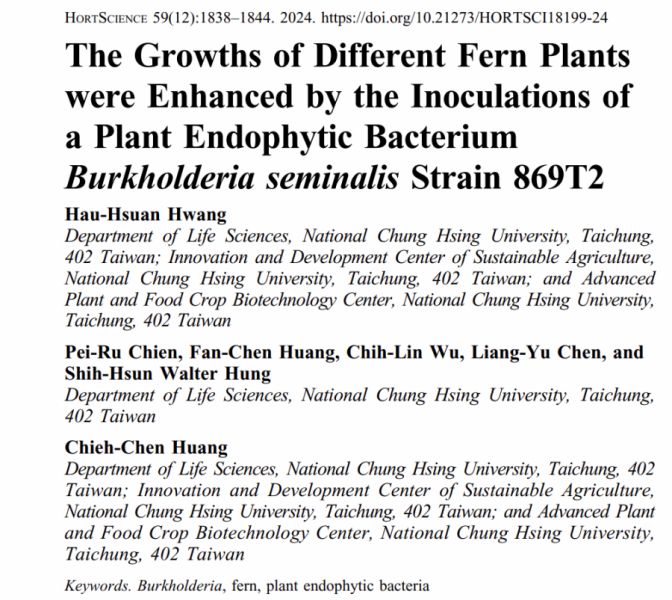新穎材料農業:友善環境農業新穎材料研發與安全評估【土壤環境科學系/鄒裕民特聘教授、劉雨庭副教授/優聘教師】
| 論文篇名 | 英文:Redox reactions between chromium(VI) and hydroquinone: alternative pathways for polymerization of organic molecules 中文:六價鉻與對苯二酚之間的氧化還原反應:有機分子聚合的替代途徑 |
| 期刊名稱 | ENVIRONMENTAL POLLUTION |
| 發表年份,卷數,起迄頁數 | 2020, 261, 114024 |
| 作者 | Tzou, Yu-Min(鄒裕民); Chen, Kai-Yue; Cheng, Ching-Yun; Lee, Way-Zen; Teah, Heng Yi; Liu, Yu-Ting(劉雨庭)* |
| DOI | 10.1016/j.envpol.2020.114024 |
| 中文摘要 | 有機化合物還原六價鉻是降低其在環境中毒性和移動性的主要途徑之一。然而,有機分子的氧化產物受到的關注較少。在本篇研究中,對苯二酚為代表性的有機化合物,觀察與六價鉻的氧化還原反應和伴隨的氧化產物。光譜分析結果顯示,氫氧化鉻沉澱物在六價鉻和對苯二酚的氧化還原反應過程中為主要的鉻物種。對於分離出的濾液,酸化的過程導致有機分子的氧化聚合,並與三價鉻錯合。芳香族結構主導著黑色且蓬鬆的有機聚合物的化學結構,然而,其由於缺乏脂肪鏈,因此與天然腐植酸結構不同。鉻X光吸收近邊緣結構(XANES)光譜的線性組合擬合(LCF)結果則顯示,濾液酸化後所得沉澱物中高達90.4%的鉻物種是與類腐植酸聚合物錯合的三價鉻,暗示三價鉻可能在對苯二酚的聚合過程中為有機分子之間的連結。這項研究表明六價鉻可能導致酸性溶液中有機分子聚合,因此,它可以提高科學界的注意,當強氧化劑六價鉻參與反應時,有機分子的氧化分解可能不是唯一途徑。 |
| 英文摘要 | Chromium (VI) reduction by organic compounds is one of the major pathways to alleviate the toxicity and mobility of Cr(VI) in the environment. However, oxidative products of organic molecules receive less scientific concerns. In this study, hydroquinone (H2Q) was used as a representative organic compound to determine the redox reactions with Cr(VI) and the concomitant oxidative products. Spectroscopic analyses showed that Cr(III) hydroxides dominated the precipitates produced during redox reactions of Cr(VI) and H2Q. For the separated filtrates, the acidification induced the oxidative polymerization of organic molecules, accompanied with the complexation with Cr(III). The aromatic domains dominated the chemical structures of the black and fluffy organic polymers, which was different to the natural humic acids due to the shortage of aliphatic chains. Results of linear combination fitting (LCF) for Cr K-edge X-ray absorption near edge structure (XANES) spectra demonstrated that up to 90.4% of Cr inventory in precipitates derived after the acidification of filtrates was Cr(III) complexed with humic-like polymers, suggesting that Cr(III) possibly acted as a linkage among organic molecules during the polymerization processes of H2Q. This study demonstrated that Cr(VI) may lead to the polymerization of organic molecules in an acidic solution, and thus, it could raise scientific awareness that the oxidative decomposition of organic molecules may not be the only pathway while interacting with the strong oxidant of Cr(VI). |







